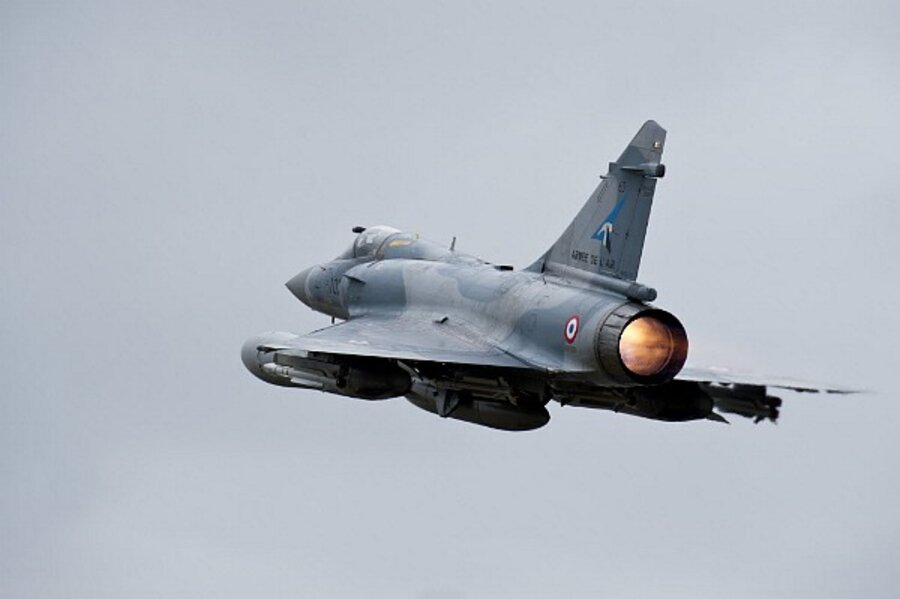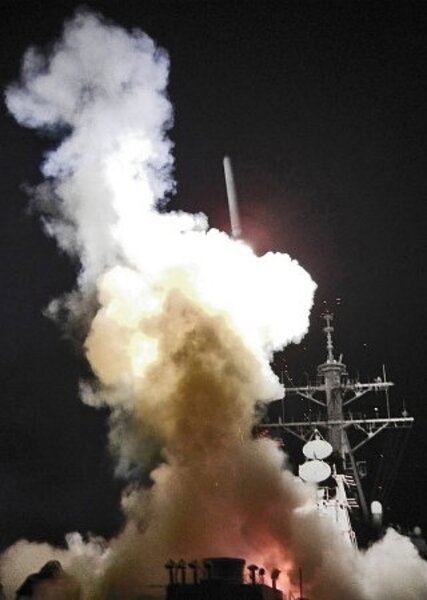US leads 'Odyssey Dawn' initial attack on Libya
Loading...
As the situation in Libya escalated toward international war, the Obama administration was careful to portray US involvement as “supportive” with other countries in the lead. But on day one of the multinational conflict, it was the United States that provided most of the firepower and command direction for "Operation Odyssey Dawn."
Just hours – perhaps minutes – after an emergency summit in Paris on implementing the UN Security Council resolution authorizing military action in Libya, French and British fighters were probing Libyan airspace.
There were early reports that French jets had hit as many as four Libyan army tanks. But the first major attack came as 112 Tomahawk cruise missiles from US Navy ships (and one British submarine) struck surface-to-air missiles, early warning sites, and key communication modes.
“This will allow us to penetrate a medium-to-high threat environment without putting air crews at risk,” explained Vice Admiral William Gortney, director of the Joint Chiefs of Staff, in a Saturday afternoon Pentagon briefing. “It opens up as wide a space as possible for the no-fly zone.”
Adm. Gortney stressed that no US aircraft were flying over Libya (although command-and-control and radar-jamming aircraft can operate effectively off-shore), nor are there any US forces on the ground to provide targeting information.
In all, some 20 targets around Tripoli and Misurata were hit Saturday, after which high-altitude US Global Hawk pilotless drone aircraft will be used to provide bomb-damage assessment.
In essence, Saturday’s attacks were meant to shape the battle space so that coalition aircraft from other countries can safely enforce the no-fly zone.
“This is the first phase of a multi-phase operation,” said Adm. Gortney.
With the French attacks on Libyan tanks, this also seems certain to include a “no-drive zone” for any vehicles seen as threatening to rebel fighters or civilians. Gortney would not speculate on future operations or on whether those might involve US attack aircraft flying from Europe or from aircraft carriers.
US Navy ships in the Mediterranean include the guided-missile destroyers USS Barry and USS Stout, amphibious warships USS Kearsarge and USS Ponce, and a command-and-control ship, the USS Mount Whitney. In all, 11 US Navy ships are in the area, in addition to 14 coalition ships.
Leaders of the coalition countries were quick to speak about the decision to attack Libyan targets.
“What we are doing in necessary, it is legal, and it is right,” said British Prime Minister David Cameron. “I believe we should not stand aside while this dictator murders his own people.”
“I am deeply aware of the risks of any military action, no matter what limits we place on it,” President Obama said from Brazil, the first stop in his Latin America trip. “I want the American people to know that the use of force is not our first choice and it’s not a choice that I make lightly.”
“But we cannot stand idly by when a tyrant tells his people that there will be no mercy, and his forces step up their assaults on cities like Benghazi and Misurata, where innocent men and women face brutality and death at the hands of their own government,” he said. “So we must be clear: Actions have consequences, and the writ of the international community must be enforced.”
The Pentagon has dubbed the venture "Operation Odyssey Dawn.” In command of the operation from the USS Mount Whitney is Admiral Samuel Locklear, commander of all US naval forces in Europe and Africa.






